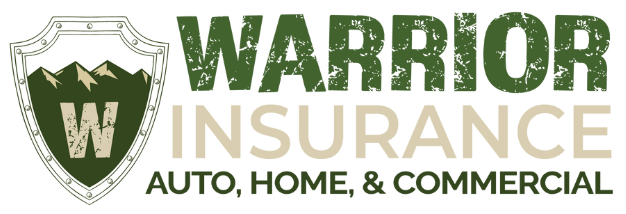Buying a new home is exciting, but sorting through home owner’s insurance can feel like one more thing on a long to-do list. Still, picking the right coverage isn’t something to rush through. It gives you protection against damage, theft, and accidents that could otherwise lead to unexpected costs. Good coverage turns a stressful moment into a manageable one, offering some breathing room when things don’t go as planned.
Before you commit to a policy, it’s important to ask the right questions. These help you understand what you’re paying for, what’s actually covered, and how your policy works in different situations. Even if this isn’t your first time buying insurance, rules and options change. Having a solid sense of your needs, home features, and how insurance applies to your situation in Colorado Springs can go a long way in making smart choices.
What Coverage Do You Really Need?
Home owner’s insurance isn’t just one blanket policy. It’s actually made up of several types of coverage, each protecting something different. Before you sign anything, take a step back and look at your specific needs.
Here are the main parts of a typical policy:
– Dwelling coverage protects the structure of your home like the roof, walls, floors, and built-in appliances.
– Personal property coverage takes care of your belongings like furniture, clothing, and electronics.
– Liability protection helps with medical or legal bills if someone is hurt on your property.
– Loss of use coverage helps cover expenses like hotel stays or meals if your home becomes unlivable after a covered event.
You might also want extra coverage for specific risks. For example, if you own a lot of jewelry, musical equipment, or rare collectibles, a basic policy might not be enough. Similarly, homeowners in areas with higher fire or storm damage risk often add more protection.
Think about where your home is located, what it’s built from, and what you keep inside it. Ask yourself what it would cost to repair or replace these things. If you’re not sure how to figure that out, your insurance agent can walk you through it step by step.
How Much Coverage Is Enough?
This is where enough coverage can really make or break your policy. If the payout from your policy falls short of what it would cost to repair or rebuild your home, you’ll have to fill in the gap yourself. On the other hand, you don’t want to pay for more coverage than you realistically need.
Here’s one quick example. Let’s say your home’s market value is $300,000, but it would cost $350,000 to rebuild after a fire. If your policy only covers the market value, you might come up short during a major claim. That’s why it’s usually better to focus on replacement cost rather than market value when setting up your policy.
Ask your agent whether your policy includes:
– Replacement cost value or actual cash value
– Inflation protection
– Coverage for upgrades to meet newer building codes
The goal is to be sure that your home is fully protected right now and down the road. Life changes and values shift. A policy that made sense three years ago might not cover what you’ve added or changed since then. That’s why checking in regularly and adjusting your coverage matters more than you might think.
What Is the Claims Process Like?
Understanding how to file a claim in a moment of need simplifies an otherwise stressful situation. Knowing what to expect can make the whole process smoother. Here’s a basic rundown of how a claim typically works:
1. Immediate Response: Contact your insurance company as soon as an incident occurs. Provide them with all the necessary details, including photos of any damage and relevant documents.
2. Claim Assessment: An adjuster will likely visit your home to evaluate the damage or loss. They’ll determine what your policy covers and estimate repair costs.
3. Review and Approval: The company will review the adjuster’s report and determine the payout, which covers repairs or replacements based on your policy terms.
4. Payout and Repairs: Once the claim is approved, you’ll receive funds to proceed with repairs or replacements.
When picking a policy, ask about the claims process. You want a company with a reputation for quick responses and helpful service. Read reviews or talk with friends and neighbors to see how others have found working with a specific insurer during a claim.
Are There Any Discounts Available?
Insurance can seem costly, but there are discounts available. A little digging can help you save some money. Here’s how you might reduce your premiums:
– Bundling Policies: Consider getting your home owner’s and auto insurance from the same company. Many offer a discount for bundling.
– Home Security Systems: Installing a home security system can decrease your premium. Insurance companies see it as a lower risk for theft or burglary.
– Loyalty Discounts: Some insurers reward long-term customers with reduced rates. Staying with the same company for several years might pay off in more ways than one.
Discounts can lead to meaningful savings. It’s always worth asking your insurance representative what’s available to you. Every bit saved adds up.
How Does the Deductible Work?
Your deductible is what you pay out of pocket before your insurance kicks in. It plays a big role in how much you pay for your premium.
Generally, the higher your deductible, the lower your premium, and the lower your deductible, the higher your premium. It’s a trade-off between how much risk you’re willing to take on now versus later.
Let’s say you have a $1,000 deductible. If a storm causes $4,000 worth of damage to your roof, you pay the first $1,000 and your insurance covers the rest. But if you raise your deductible to $2,500 to save money on premiums, you’ll be responsible for more upfront if something happens.
Think about your budget and how much you could comfortably cover in an emergency. Your insurance agent can help you run through different scenarios to find the right balance between deductible and premium.
Understanding Policy Exclusions and Limitations
It’s easy to assume that home owner’s insurance covers everything, but that’s not how it works. Policies have exclusions and limits that you need to understand before signing.
Common exclusions include:
– Flood damage, which usually requires a separate policy
– Earthquake damage, often not included in a standard package
– Wear and tear, which isn’t covered since it’s expected over time
Knowing these limitations ahead of time keeps you from facing surprises during a claim. Always take time to read the fine print in your policy. Ask your agent to explain anything that’s unclear. In some cases, you may need to buy additional policies or riders to fill in the gaps.
Safeguarding Your Home with Warrior Insurance
Home owner’s insurance plays a big role in protecting your home and everything that matters to you. From understanding how coverage works to knowing how to handle claims and deductibles, asking the right questions helps you make better decisions.
Every home is different, and so are the policies that protect them. Whether you live in a historic house downtown or a newer build on the edge of Colorado Springs, your needs may be unique. The more prepared you are, the better choices you can make to keep everything running smoothly.
At Warrior Insurance, we’re here to help protect your space with confidence and clarity. We’ll take time to learn what matters to you and guide you toward a custom plan that fits your situation and budget.
FAQs
What factors can affect my home owner’s insurance premium?
Your premium can be influenced by your home’s age, construction type, location, past claims, and even your credit score. Features like a security system or fire alarms may lower your rate.
Can I adjust my coverage limits as my needs change?
Yes, you can update your coverage at any time. Let your agent know if you’ve made upgrades, renovations, or major purchases that should be reflected in your policy.
What should I do if I need to file a claim?
Start by contacting your insurance provider right away. Take photos of the damage, save receipts, and make temporary repairs if needed to prevent further loss.
How can I ensure I’m getting the best rate on my home owner’s insurance?
Compare quotes, ask about bundling options, and regularly review your policy. Staying informed about available discounts can help you save over time.
Does home owner’s insurance cover natural disasters like floods or earthquakes?
Standard policies don’t usually cover these disasters. You’ll need separate flood or earthquake insurance if you live in a high-risk area. Ask your agent about what’s recommended for Colorado Springs.
Choosing the right home owner’s insurance plan in Colorado Springs is a big step toward protecting your home and everything that matters inside it. At Warrior Insurance, we make it easy to understand your options and find a policy that fits your lifestyle. Let us help you feel confident in your coverage so you can focus on enjoying your space with peace of mind.

